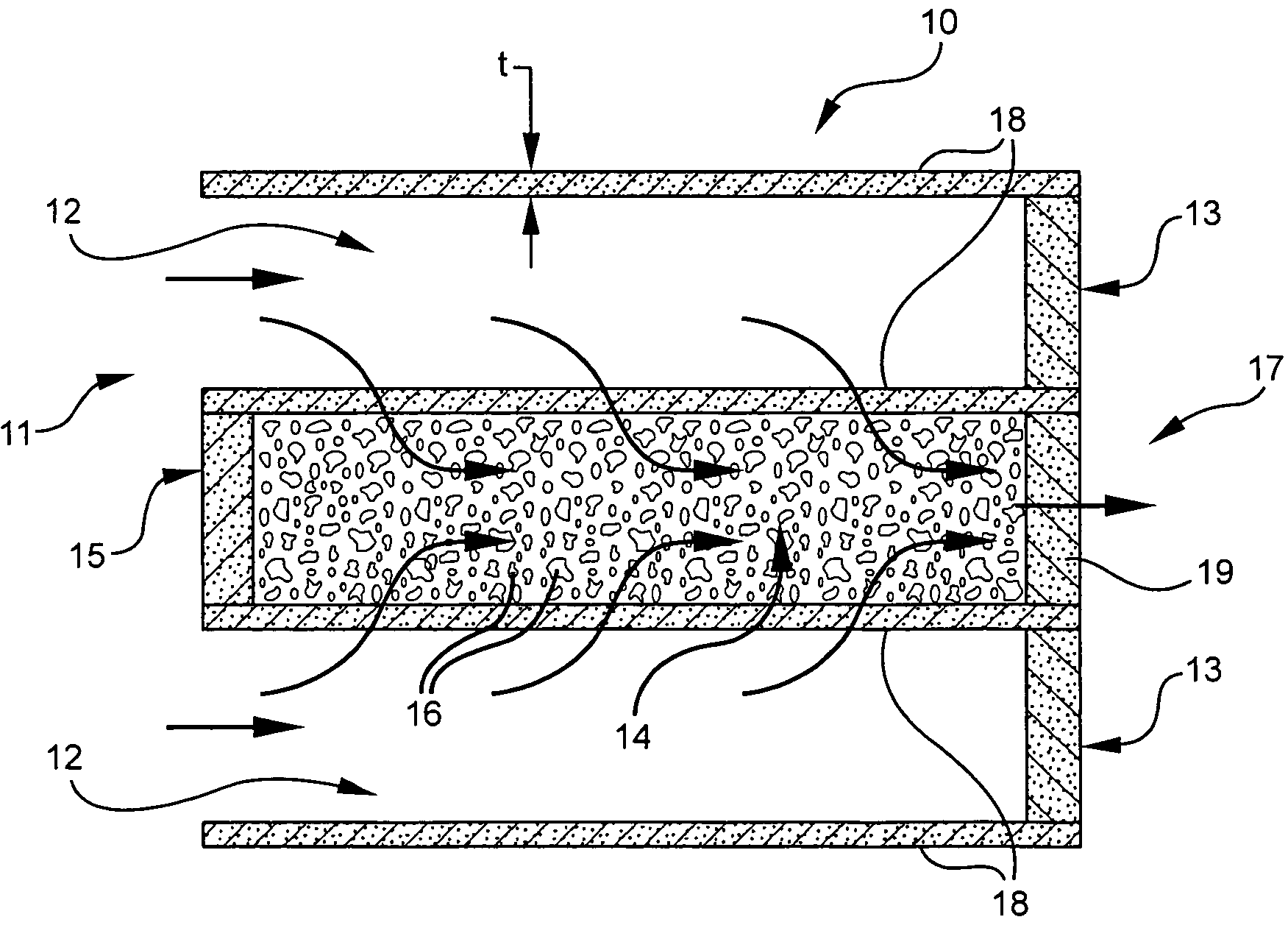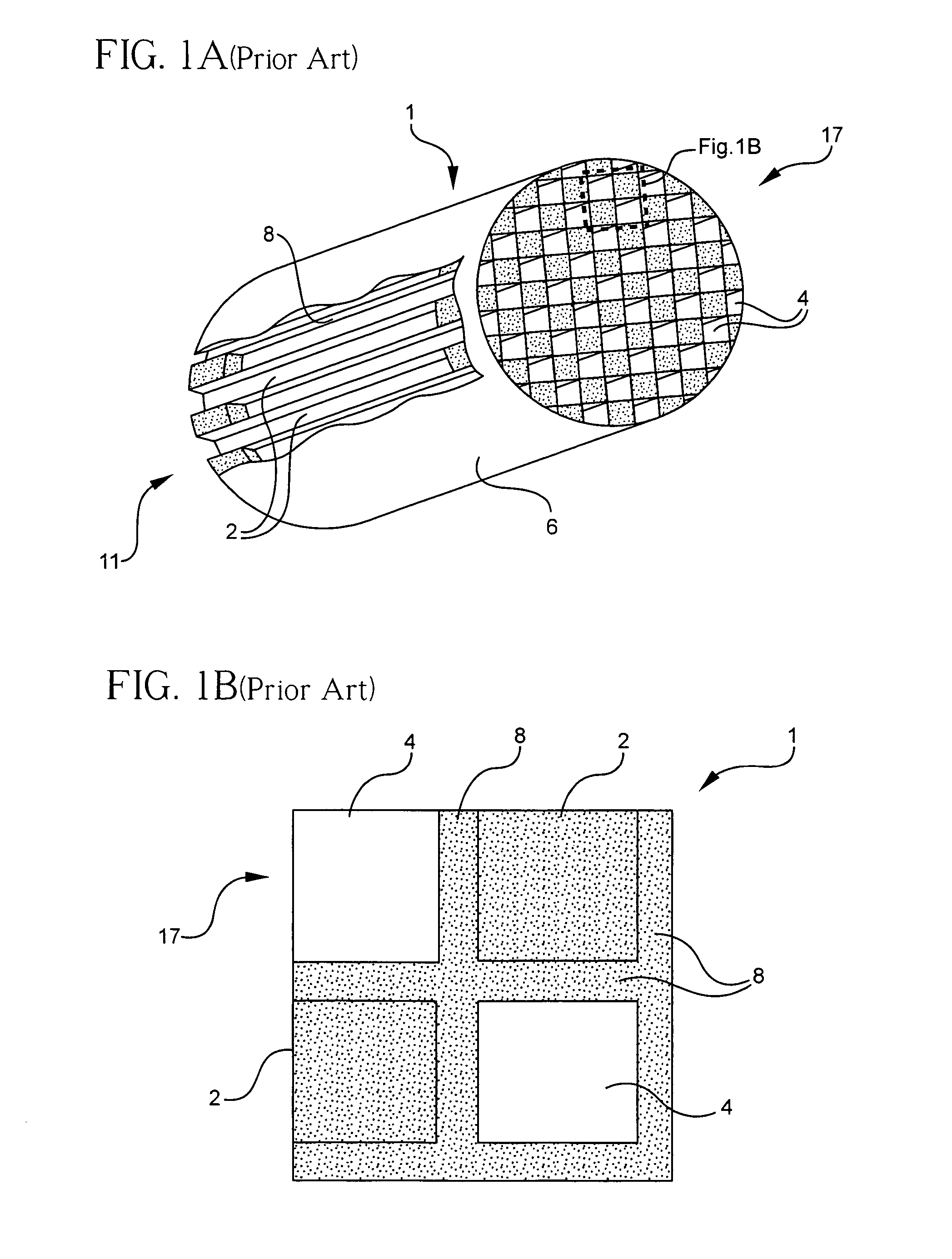Ceramic wall-flow filter including heat absorbing elements and methods of manufacturing same
a ceramic wall-flow filter and filter technology, which is applied in the field of ceramic wall-flow filters, can solve the problems of higher maximum temperatures, fuel penalty, pressure drop in gas, etc., and achieve the effect of increasing the bulk heat capacity of the filter, and reducing the amount of was
- Summary
- Abstract
- Description
- Claims
- Application Information
AI Technical Summary
Benefits of technology
Problems solved by technology
Method used
Image
Examples
Embodiment Construction
[0033]FIG. 1A illustrates a partially-sectioned isometric view of a prior art ceramic wall-flow filter 1, and FIG. 1B shows an enlarged outlet end partial view of the prior art honeycomb structure for the filter 1. As illustrated in FIGS. 1A, 1B, the conventional filter 1 has an end-plugged honeycomb structure with inlet cells 2 which are plugged in the views shown on the outlet end 17, and outlet cells 4 that are open at the outlet end. The plurality of cells extend between an inlet 11 and an outlet 17 ends of the filter 1 and have generally square cross-sections formed by interior porous walls 8 that run substantially longitudinally between the inlet 11 and outlet 17 ends of the filter 1. The cells 2, 4 are arranged to alternate between inlet cells 2 and outlet cells 4, and plugged in an alternating manner for each end, resulting in a checkered pattern of alternating cells. Therefore, inlet cells 2 are bordered on all sides by outlet cells 4, and vice versa (of course except adjac...
PUM
| Property | Measurement | Unit |
|---|---|---|
| temperature | aaaaa | aaaaa |
| temperature | aaaaa | aaaaa |
| thickness | aaaaa | aaaaa |
Abstract
Description
Claims
Application Information
 Login to View More
Login to View More - R&D
- Intellectual Property
- Life Sciences
- Materials
- Tech Scout
- Unparalleled Data Quality
- Higher Quality Content
- 60% Fewer Hallucinations
Browse by: Latest US Patents, China's latest patents, Technical Efficacy Thesaurus, Application Domain, Technology Topic, Popular Technical Reports.
© 2025 PatSnap. All rights reserved.Legal|Privacy policy|Modern Slavery Act Transparency Statement|Sitemap|About US| Contact US: help@patsnap.com



